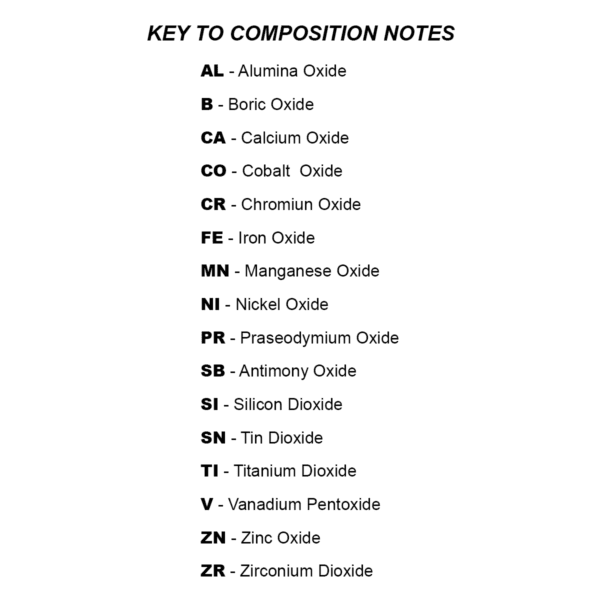MASON STAIN – ST6464 – ZIRCONIUM
$5.25 – $112.25
Mason Stain products larger than a 1 OZ sample will need to be
weighed out on a per order basis.
Local Customers: Plan ahead if you are shopping in-store at our Showroom - call your order in 24hrs in advance so we have time to prepare your weigh outs for you.
COMPOSTION – TI V ZR
Reference Notes
1. Can be used as a ‘body stain’ in porcelain at high temperatures. All of the brown colors can be used as ‘body stains’ but will vary in shade considerably depending on the composition of the body and temperature at which it is fired.
1a. Use only as a ‘body stain’ Firing Temperatures can only be a rough guide. Firing at 2200 degrees F on a slow schedule may give the equivalent maturing as firing at 2300 degrees F on a fast schedule. The cycle, atmosphere and rate of cooling will affect the color.
2. Max. firing limit 2156 degrees F (1180 degrees C).
3. Max. firing limit 2300 degrees F (1260 degrees C).
4. Max firing limit 1976 degrees F (1080 degrees C).
Zinc Oxide influences the color in a glaze more than any other element. Generally, zincless glazes should not contain magnesium oxide. Some colors containing zinc are to be used in a zincless glaze. The zinc in the color is in a combined form and will not harm the color, but free zinc oxide in the glaze can destroy the color.
5. Do not use zinc in glaze.
6. May be used with zinc or without zinc.
7. Zinc not necessary, but gives better results.
8. Best results with no zinc.
Calcium Oxide content as calcium carbonate should be between 12-15% for best color development. Adding the molecular equivalent of calcium oxide with wollastonite, a natural calcium silicate, often gives better uniformity. The increased silica from the wollastonite must be subtracted or the glaze will have a poor surface.
9. Glaze must contain 6.7 to 8.4% CaO (12-15% CaCO3).







Reviews
There are no reviews yet.